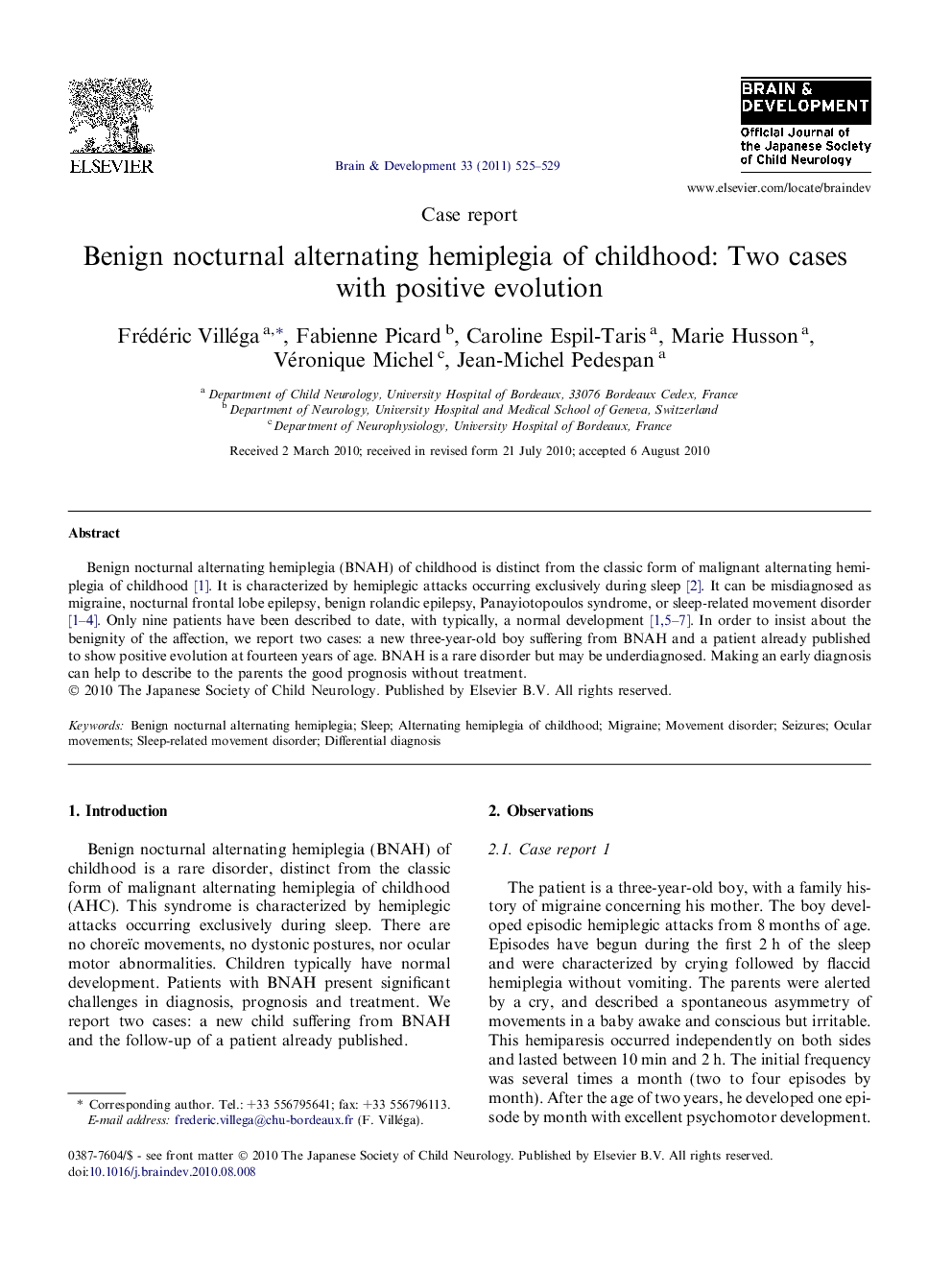| Article ID | Journal | Published Year | Pages | File Type |
|---|---|---|---|---|
| 3037587 | Brain and Development | 2011 | 5 Pages |
Benign nocturnal alternating hemiplegia (BNAH) of childhood is distinct from the classic form of malignant alternating hemiplegia of childhood [1]. It is characterized by hemiplegic attacks occurring exclusively during sleep [2]. It can be misdiagnosed as migraine, nocturnal frontal lobe epilepsy, benign rolandic epilepsy, Panayiotopoulos syndrome, or sleep-related movement disorder [1], [2], [3] and [4]. Only nine patients have been described to date, with typically, a normal development [1], [5], [6] and [7]. In order to insist about the benignity of the affection, we report two cases: a new three-year-old boy suffering from BNAH and a patient already published to show positive evolution at fourteen years of age. BNAH is a rare disorder but may be underdiagnosed. Making an early diagnosis can help to describe to the parents the good prognosis without treatment.
